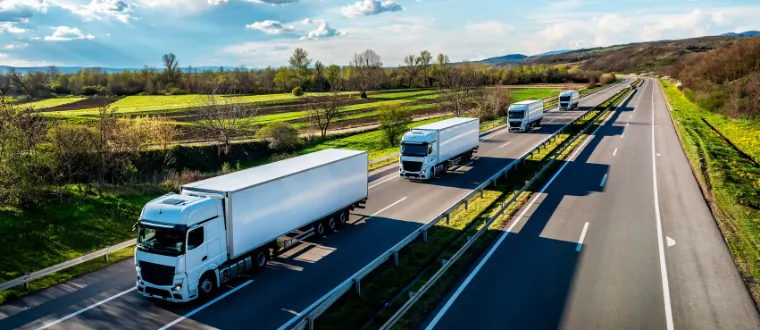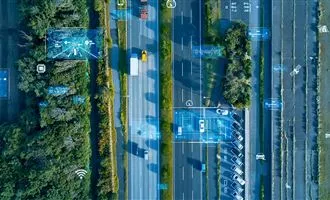

20 March 2025 - by: Eleonora Castagna
Platooning: The Smart Convoy That’s Set to Revolutionize Road Freight Transport
The future of road freight is already taking shape on European highways. Picture convoys of trucks moving in perfect synchronization, capable of reducing fuel consumption, emissions, and travel time: that’s the promise of platooning.

The European Truck Platooning Challenge has already tested this innovative solution on an international scale, involving the world’s leading heavy vehicle manufacturers. The results? Greater efficiency, lower costs, and more sustainable logistics. Now, as lawmakers work to define common rules on spacing and automation levels, Europe is preparing to shift platooning from experimental pilot to real-world solution for strategic freight corridors.
What is Platooning?
Platooning is a form of coordinated driving where multiple trucks travel in a tightly spaced convoy. Through advanced communication and control systems (V2V – Vehicle to Vehicle) and driver assistance technologies (ADAS – Advanced Driver Assistance Systems, AI – Artificial Intelligence, radar and LIDAR – Light Detection and Ranging sensors), the vehicles can synchronize their movements in real time. This allows them to maintain reduced inter-vehicle distances without compromising safety.
What are the Benefits?
- Reduced fuel consumption and emissions: When trucks drive close together in formation, the leading vehicle reduces air resistance for those behind, creating a “drafting” effect. Studies and field tests show that depending on convoy length and speed, fuel savings can reach up to 10%.
- Greater logistical efficiency: Platooning allows for more precise route coordination, minimizing idle times and improving delivery punctuality. Additionally, driver fatigue is reduced thanks to driving assistance systems that maintain spacing and lane positioning.
- Improved road safety: Advanced sensors and communication systems constantly monitor the distance between trucks and the surrounding environment. In critical situations, the convoy responds in a synchronized and extremely fast manner — any braking or deceleration from the lead vehicle is instantly mirrored by the following ones, reducing the risk of chain collisions.
- Less traffic congestion: By traveling in compact formations, heavy vehicles take up less space on the road, helping traffic to flow more smoothly — particularly on busy highways.
Although platooning holds great promise, several hurdles still hinder its widespread adoption. First and foremost, there is a lack of standardized regulations at both national and international levels. In Europe, there is still debate around safe following distances, driver qualification requirements, and permissible levels of vehicle automation. A robust digital infrastructure is also essential, relying on high-speed V2V connectivity (often 5G). Roads need to offer reliable coverage, and trucks must be equipped with advanced hardware and software: which can be a costly investment for many operators.
Cybersecurity is another key concern. Constant data exchange between vehicles demands high protection standards to prevent tampering or cyberattacks that could compromise the safety of people and goods. Moreover, many companies are hesitant to invest in platooning-capable fleets due to the uncertainty surrounding tangible return on investment.
Conclusion
Platooning is one of the most significant innovations in road freight transport — a step toward automation and sustainability that can help reduce costs, emissions, and accidents. However, large-scale adoption will require clear regulatory frameworks, investments in enabling technologies, and a mindset shift across the transport industry. Keeping an eye on pilot projects and the early success stories of pioneering operators will be key to understanding how and when platooning could become the new standard on our roads.
Share




























